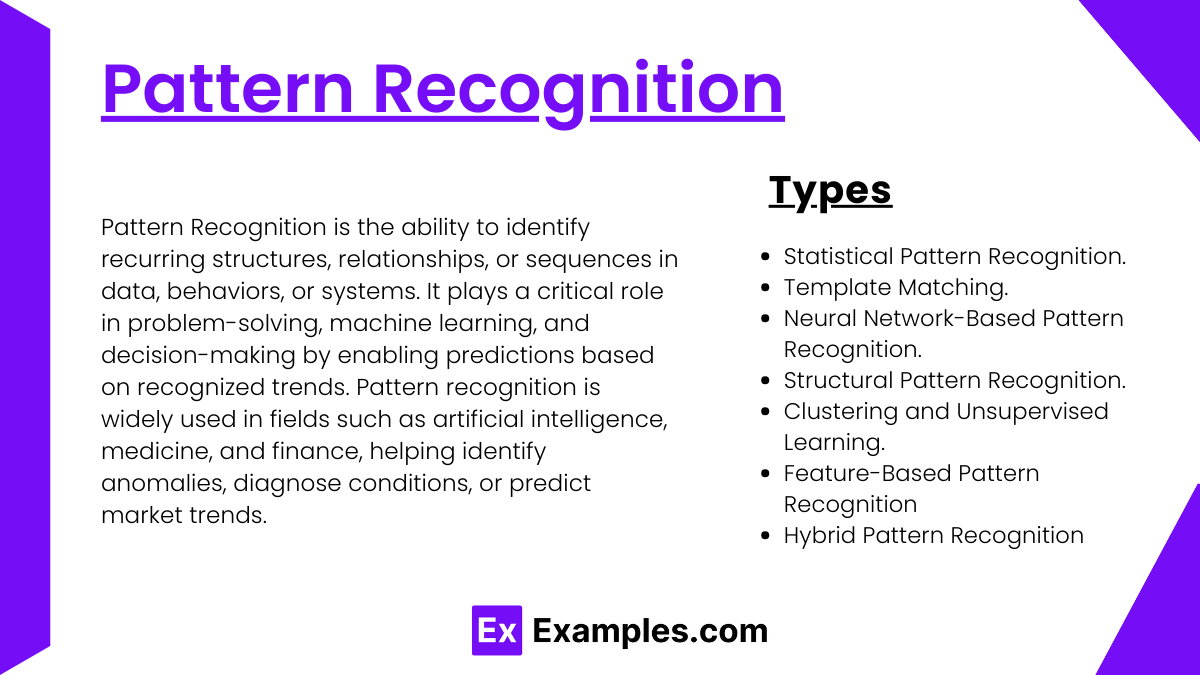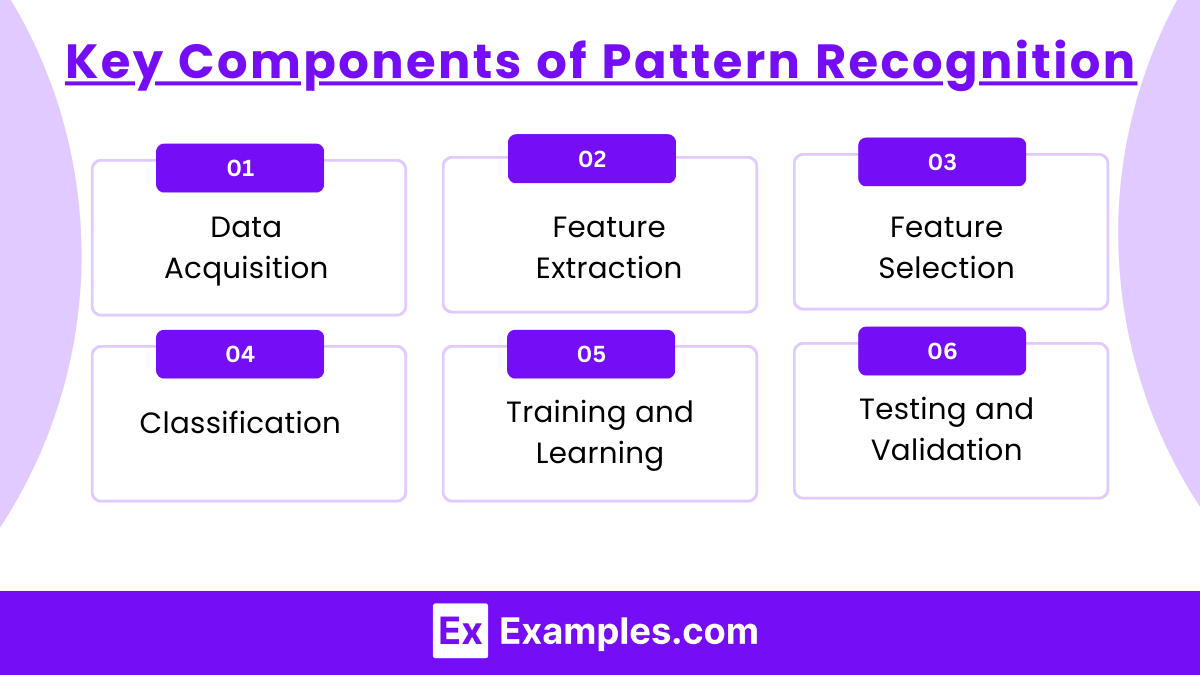Preparing for the CMT Exam requires a comprehensive understanding of “Pattern Recognition,” a fundamental aspect of technical analysis. This concept emphasizes the identification and analysis of recurring chart patterns that signal potential market movements. Pattern Recognition involves distinguishing formations like head-and-shoulders, double tops and bottoms, and triangles to predict price trends. It requires understanding the psychological forces behind these patterns and applying them to trading strategies. Mastery of Pattern Recognition ensures traders can anticipate market behavior and make informed decisions, enhancing the precision and reliability of trading systems.
Learning Objectives
In studying Pattern Recognition for the CMT Exam, you should learn to understand its importance in identifying recurring price formations that signal market trends and reversals. Effective pattern recognition involves analyzing technical chart patterns like head-and-shoulders, triangles, and double tops or bottoms to forecast price movements. This process includes evaluating the volume, price action, and breakout levels to validate patterns. Techniques such as historical comparisons, automated pattern recognition tools, and integration into trading strategies help enhance precision. Mastery of pattern recognition is crucial for improving decision-making and achieving success in the CMT Exam.
Importance of Pattern Recognition

- Scientific Discovery: Pattern recognition is at the core of breakthroughs in science, helping researchers identify relationships and trends that drive new discoveries.
- Enhanced Problem-Solving: Pattern recognition allows individuals and systems to identify recurring trends, enabling effective and efficient problem-solving by predicting future outcomes based on past data.
- Improved Decision-Making: Recognizing patterns helps in analyzing complex situations and making informed decisions, especially in industries like finance, healthcare, and technology.
- Innovation and Creativity: By identifying patterns, individuals can draw connections between seemingly unrelated concepts, fostering innovation and creative thinking.
- Automation and Efficiency: Pattern recognition is fundamental in automating tasks, as seen in artificial intelligence and machine learning, streamlining processes, and reducing manual labor.
- Early Detection of Anomalies: In fields like cybersecurity and healthcare, recognizing deviations from normal patterns allows for early detection of threats or illnesses, potentially saving resources and lives.
- Personalization: It enables personalized recommendations in e-commerce, entertainment, and education by analyzing user preferences and behaviors.
- Data Interpretation: In a world of big data, pattern recognition helps to extract meaningful insights, making vast datasets manageable and actionable.
- Adaptability in Learning: Recognizing patterns aids in adapting to new information and environments, making it crucial for both human learning and adaptive technologies.
- Competitive Advantage: Businesses leveraging pattern recognition can predict market trends, optimize operations, and gain an edge over competitors.
Types of Pattern Recognition

Pattern recognition is a process of identifying patterns and regularities in data. It is widely used in artificial intelligence, machine learning, and data analysis. Below are the key types of pattern recognition:
1. Statistical Pattern Recognition
- Overview: Relies on statistical techniques to identify patterns based on numerical data and probabilities.
- Key Features: Involves feature extraction, probability density estimation, and classification.
- Applications: Image analysis, speech recognition, and biometric authentication.
2. Template Matching
- Overview: Compares a given input to a stored pattern or template to find matches.
- Key Features: Works well for predefined, rigid patterns but struggles with variability.
- Applications: Optical character recognition (OCR), barcode scanning, and object detection.
3. Neural Network-Based Pattern Recognition
- Overview: Uses artificial neural networks (ANNs) to learn and identify patterns.
- Key Features: Capable of handling non-linear and complex data structures.
- Applications: Facial recognition, natural language processing (NLP), and predictive analytics.
4. Structural Pattern Recognition
- Overview: Focuses on the relationships between data components rather than individual features.
- Key Features: Uses graph theory and syntactic methods for pattern representation.
- Applications: DNA sequence analysis, object recognition in images, and language syntax parsing.
5. Clustering and Unsupervised Learning
- Overview: Groups similar data points into clusters without prior labeling.
- Key Features: Identifies hidden structures in data by grouping similar patterns.
- Applications: Market segmentation, anomaly detection, and customer behavior analysis.
6. Feature-Based Pattern Recognition
- Overview: Involves selecting distinct features from data for classification.
- Key Features: Relies on algorithms like Principal Component Analysis (PCA) for dimensionality reduction.
- Applications: Medical imaging, fingerprint recognition, and video surveillance.
7. Hybrid Pattern Recognition
- Overview: Combines multiple methods (e.g., statistical and neural networks) to improve accuracy.
- Key Features: Leverages strengths of various techniques for better results.
- Applications: Automated driving systems, robotics, and multi-modal biometric systems.
Tools of Pattern Recognition

1. Machine Learning Frameworks
- TensorFlow: Open-source library for numerical computation and machine learning, widely used for pattern recognition tasks.
- PyTorch: Flexible deep learning framework for developing and training neural networks for image, audio, and text pattern recognition.
- Scikit-learn: Comprehensive library for traditional machine learning techniques like classification, clustering, and regression.
- Keras: High-level neural networks API for fast prototyping in pattern recognition tasks.
2. Statistical Analysis Tools
- R: Statistical computing software with numerous libraries (e.g.,
caret,mlr) for pattern recognition. - MATLAB: Used for numerical analysis and pattern recognition in engineering and science.
- SPSS: Analytical tool for statistical pattern recognition and predictive analysis.
3. Visualization and Pattern Mining
- Tableau: Data visualization software for identifying trends and patterns in large datasets.
- RapidMiner: Data science platform with tools for predictive modeling and pattern discovery.
- Orange: Open-source data visualization and analysis tool with machine learning capabilities for pattern recognition.
4. Image and Video Analysis Tools
- OpenCV: Open-source computer vision library for image and video pattern recognition.
- Dlib: C++ toolkit with machine learning algorithms for object and pattern detection.
- MATLAB Image Processing Toolbox: Specialized for image pattern recognition and analysis.
5. Audio and Signal Processing Tools
- Librosa: Python library for audio analysis and feature extraction.
- Praat: Software for phonetic pattern recognition and speech signal analysis.
- Wavelet Toolbox in MATLAB: Designed for signal pattern recognition using wavelet transforms.
6. Natural Language Processing (NLP) Tools
- NLTK: Natural Language Toolkit for Python, used for text analysis and pattern recognition.
- SpaCy: Industrial-strength NLP library for pattern recognition in text data.
- Gensim: Library for topic modeling and document similarity.
Key Components of Pattern Recognition

- Data Acquisition: Collecting raw data from sensors or sources for analysis.
- Feature Extraction: Identifying significant patterns or characteristics in the data.
- Feature Selection: Choosing the most relevant features to reduce dimensionality.
- Classification: Assigning data to predefined categories or labels using algorithms.
- Training and Learning: Building models using training data to recognize patterns.
- Testing and Validation: Evaluating the model’s performance on unseen data.
Examples
Example 1. Financial Market Analysis
Pattern recognition is a vital tool for analyzing financial markets. Traders use it to identify trends, such as head-and-shoulders or double-bottom formations, which help predict future price movements. By recognizing these patterns, investors can make informed decisions about when to buy or sell stocks, commodities, or currencies, improving their chances of achieving profitable outcomes.
Example 2. Medical Diagnosis
In healthcare, pattern recognition plays a crucial role in diagnosing diseases. For example, radiologists use pattern recognition algorithms to identify anomalies in imaging scans, such as tumors in MRI or X-ray images. Similarly, cardiologists rely on ECG patterns to detect irregular heart rhythms, enabling early and accurate intervention.
Example 3. Machine Learning and AI
In artificial intelligence, pattern recognition is the backbone of many algorithms. Applications like facial recognition, voice assistants, and handwriting analysis rely on identifying and learning patterns from vast datasets. These systems improve over time by recognizing recurring structures, making them more accurate and efficient.
Example 4. Crime Prediction and Prevention
Law enforcement agencies leverage pattern recognition to analyze crime data and predict potential criminal activities. For instance, by studying historical crime patterns in specific locations, police departments can allocate resources more effectively, reducing the likelihood of incidents and enhancing public safety.
Example 5. Consumer Behavior Analysis
Businesses use pattern recognition to understand customer behavior. By analyzing purchasing patterns, companies can predict future consumer needs and preferences. This approach allows businesses to tailor marketing strategies, optimize inventory, and provide personalized recommendations, ultimately enhancing customer satisfaction and loyalty.
Practice Questions
Question 1
Which of the following best describes pattern recognition?
a) Identifying specific types of data in images
b) Recognizing trends or regularities in data
c) Sorting data based on predefined categories
d) Generating new data based on input patterns
Answer: b) Recognizing trends or regularities in data
Explanation:
Pattern recognition is the process of identifying trends, regularities, or structures within a dataset. Unlike simple sorting (option c) or data generation (option d), it involves the ability to discern hidden relationships or similarities across diverse data points. For example, in facial recognition, pattern recognition detects facial features and matches them with known data. Option a focuses only on images, while pattern recognition applies broadly to text, audio, and other data types.
Question 2
Which method is most commonly used for pattern recognition in supervised learning?
a) Clustering
b) Decision Trees
c) K-Means Algorithm
d) PCA (Principal Component Analysis)
Answer: b) Decision Trees
Explanation:
In supervised learning, the algorithm learns patterns from labeled data to make predictions. Decision trees are a common supervised learning method used for classification and regression tasks. They recognize patterns by splitting data based on decision rules. Clustering (option a) and PCA (option d) are unsupervised methods, while K-Means (option c) specifically identifies clusters in data, not labels.
Question 3
What is a common application of pattern recognition in the real world?
a) Weather forecasting using numerical data
b) Face detection in security systems
c) Storing data in relational databases
d) Developing algorithms for robotic navigation
Answer: b) Face detection in security systems
Explanation:
Face detection is a direct application of pattern recognition, where the system identifies facial features like eyes, nose, and mouth from images or video frames. This technology is widely used in security systems, authentication, and social media tagging. While weather forecasting (option a) involves data modeling, it doesn’t primarily depend on pattern recognition. Robotic navigation (option d) might use pattern recognition but also requires other subsystems like pathfinding and obstacle avoidance.


